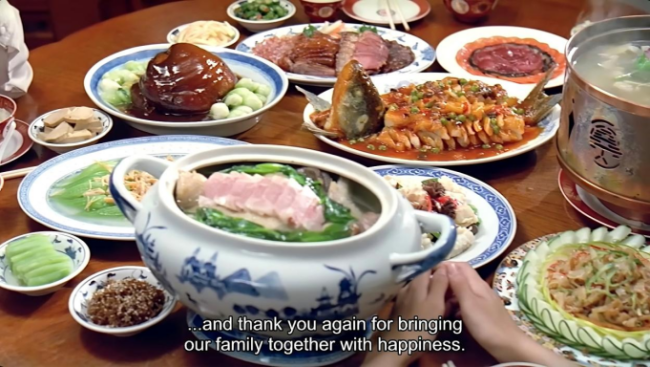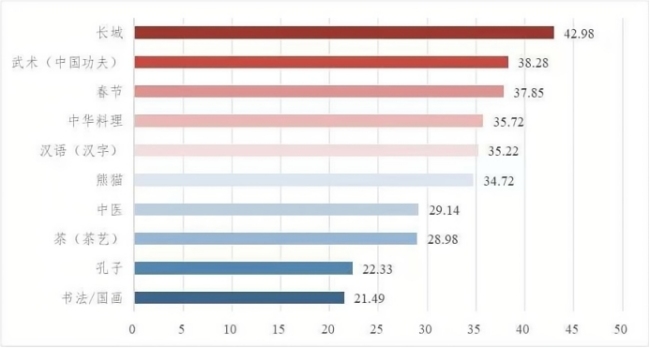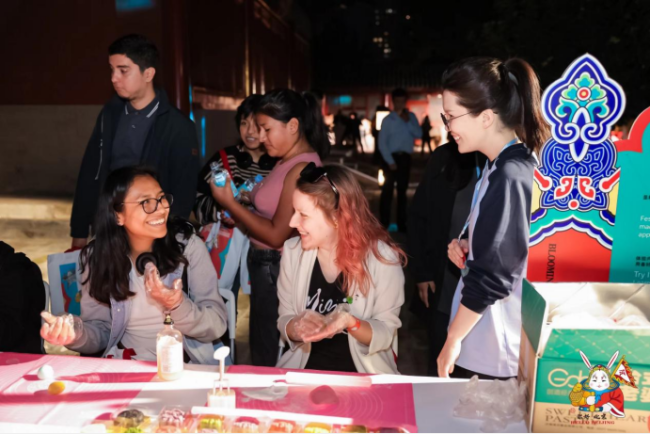
编者按:在文化对外传播的过程中,“符号”往往扮演着重要的破冰者角色。当下,凝练的文化标识正牵引着外国公众的神经,激发他们对中国文化越发浓厚的兴趣。在中国宋庆龄基金会的“文化小大使”活动现场接受采访的俄罗斯姑娘塔莎,就是在一些文化符号的影响下配资安全配资门户,开始了对中国文化的探索,用真实的感悟勾勒出一个更加立体全面的中国形象。
塔莎(ШаховаТаисияАлексеевна)来自俄罗斯,今年已经是她学习中文的第五年。她学习中文的契机,来自与母亲交谈时一句简单的“我想学中文”。在母亲朋友的帮助下,塔莎很快踏上了学习中文之旅。虽然与中国的缘分始于一个偶然,但在这五年间,塔莎对中国文化的兴趣越来越浓厚。“我很喜欢旅游,特别是想来中国。”尽管中文学习充满挑战,但塔莎没有放弃:“我希望能听懂当地人说话,这是我继续学习的动力。”

图为塔莎接受采访现场
作为塔莎接触中国的开端,“中文”帮助她打开了一扇与中国对话的大门。随着学习的不断深入,那些陌生的文字符号逐渐与她对中国文化的印象对应起来。“‘美食’和‘熊猫’这些词汇是我主动学习的,”塔莎回忆道,“因为我真的很喜欢它们。”在中国美食中,她最喜欢小葱拌豆腐。“这道菜简单又很容易制作,我经常做给我的家人吃。”除此之外,塔莎还学会煎蛋和熬粥,她希望将更多的中国味道带回家。而当话题转向熊猫时,塔莎的嘴角便止不住地上扬:“它们真的太可爱了!”为了熊猫,她还特地了解了“熊猫故乡”——四川,“我知道那里有非常著名的火锅!”虽然塔莎此行未能见到熊猫,但火锅早已被列入她的美食计划。

图为塔莎在采访现场兴奋地接过熊猫玩偶
无论是美剧、韩剧中频繁出现的中餐镜头,还是现实生活中遍布各地的中餐馆,中国料理凭借其千百年来积淀的烹饪智慧,打破了语言与地域的阻碍,赢得世界食客的喜爱。“大熊猫”作为中国独有的文化表征早已超越其生物属性,成为中国对外宣传中极具辨识度的文化符号。从早期的“熊猫外交”到2022年北京冬奥会爆火的“冰墩墩”,熊猫凭借其憨态可掬的形象,俘获了世界各地人们的心,成为当之无愧的“全球顶流”。“中国美食”与“大熊猫”正以其特有的亲和力,向世界展现出友好、包容的中国形象。被这些文化符号“征服”的外国青年人也远不止塔莎一人。


在构建国际传播叙事体系的背景下,知晓度和喜爱度同等重要。为了让更多外国人了解中国,我们需要打造出有名气的文化符号。《寰球民意指数——周边国家篇(2024)》指出,近年来中国文化符号在周边国家公众中的认知度和影响力持续增强。其中,长城、武术(中国功夫)和春节的认知比例最高,中国料理、汉语(汉字)、熊猫等也受到了广泛关注。这些文化符号有效降低了跨文化理解的门槛,构建起外国公众对中国文化的初步印象。

图为周边国家公众最了解的10个中国文化符号(单位:%)
在文化对外传播的过程中,文化符号犹如一张张名片,让外界快速识别出中国文化。当然,如果传播仅停留在符号展示层面,则容易被简化为单薄的标签。“符号”可以作为文化对话的起点,但绝不应成为终点。真正的文化传播不仅要依赖符号的重复输出,更应着力创造亲身体验和互动沟通的机会,让外国友人完成从“了解文化符号”到“理解中国文化”的深刻转变。

图为外国游客在中国体验非遗文化
采访前,塔莎用“故宫”“熊猫”“丝绸”“茶”等词汇描述了对中国的印象。在此次中国之行中,她进一步尝试了书法、国画与京剧等文化活动。这些经历虽然不足以让她完整地理解中国文化,却距离她学习中文的初衷更进一步——听懂当地人说话,走进真实的中国。
 配资安全配资门户
配资安全配资门户
图为塔莎在中国印象·沙龙活动现场
在活动体验中,塔莎感受到的不只是一个个书面上的文化符号:当手指轻触描绘千里江山的宣纸肌理,当京剧戏服与行头披在T恤衫之外,那些被语言统称为“中国风”的文化元素,带着温度与呼吸向外国人展现出鲜活的文化生命力。亲历的时刻如同涓涓细流冲刷着文化隔阂的壁垒,最终在异国体验者的精神世界留下一个立体而鲜活的中国印象。
责任编辑:何博媛
Beyond Cultural Symbols: Encountering the Real China Through Personal ExperienceEditor's Note: In the process of international cultural dissemination, "symbols" often play a crucial role as icebreakers. Currently, these concise cultural identifiers are capturing the attention of foreign audiences, sparking their increasingly strong interest in Chinese culture. Tasha, a Russian participant interviewed at the China Soong Ching Ling Foundation's Junior Cultural Ambassadors event, began her exploration of Chinese culture influenced by these symbols, and through her genuine experiences, she is now painting a more comprehensive and three-dimensional picture of China.
Tasha (Шахова Таисия Алексеевна) from Russia is in her fifth year of learning Chinese. Her journey into Chinese began with a simple sentence to her mother: "I want to learn Chinese." With the help of her mother's friend, Tasha quickly embarked on her Chinese learning journey. Although her initial connection with China was coincidental, over these past five years, Tasha's interest in Chinese culture has grown stronger. "I love traveling, especially to China," she says. Despite the challenges of learning Chinese, Tasha hasn't given up: "I hope to understand what locals are saying; that's my motivation to keep learning."
As Tasha's introduction to China, the Chinese language helped her open a door to dialogue with the country. As her studies deepened, those unfamiliar characters gradually corresponded with her impressions of Chinese culture. "'Food' and 'panda' were words I actively learned," Tasha recalled, "because I really like them." Among Chinese dishes, her favorite is cold tofu with chopped green onions(小葱拌豆腐). "This dish is simple and easy to make; I often cook it for my family." Besides this, Tasha has also learned to fry eggs and cook porridge, hoping to bring more Chinese flavors home. When the topic turned to pandas, Tasha couldn't help but smile. "They are so cute!" For the sake of pandas, she specifically learned about "the hometown of pandas" – Sichuan. "I know there's very famous hot pot there!" Although Tasha couldn't see pandas on this trip, hot pot has already been added to her culinary plans.
Whether it's the frequent appearances of Chinese food in American and Korean dramas, or the ubiquitous Chinese restaurants in real life, Chinese cuisine, with its culinary wisdom accumulated over thousands of years, has broken down language and regional barriers, winning the hearts of diners worldwide. The "Giant Panda," as a unique cultural representation of China, has long transcended its biological attributes, becoming a highly recognizable cultural symbol in China's external promotion. From early "Panda Diplomacy" to the viral "Bing Dwen Dwen" at the 2022 Beijing Winter Olympics, pandas, with their endearing image, have captivated people around the world, becoming true "global icons." "Chinese cuisine" and "Giant Pandas" are using their unique approachability to present a friendly and inclusive image of China to the world. And Tasha is far from the only foreign young person "conquered" by these cultural symbols.
In the context of constructing an international communication narrative system, awareness and liking are equally important. To enable more foreigners to understand China, we need to create readily recognizable cultural symbols. The Global Public Opinion Index – Neighboring Countries (2024) points out that in recent years, the recognition and influence of Chinese cultural symbols among the public in neighboring countries have continued to increase. Among them, the Great Wall, Wushu (Chinese Kung Fu), and the Spring Festival have the highest recognition rates, while Chinese cuisine, Chinese language (characters), and pandas have also received widespread attention. These cultural symbols effectively lower the threshold for cross-cultural understanding, thereby building a preliminary impression of Chinese culture among foreign publics.
In the process of international cultural dissemination, cultural symbols are like business cards, allowing the outside world to quickly identify Chinese culture. Of course, if dissemination only stays at the level of symbol display, it can easily be reduced to superficial labels. "Symbols" can be the starting point for cultural dialogue, but they should never be the end. True cultural communication should not only rely on the repeated output of symbols but also focus on creating opportunities for personal experience and interactive communication, allowing foreign friends to complete a profound transformation from "understanding cultural symbols" to "understanding Chinese culture."
Before the interview, Tasha described her impressions of China using words like "Forbidden City," "panda," "silk," and "tea." During this trip to China, she further tried cultural activities such as calligraphy, traditional Chinese painting, and Peking Opera. Although these experiences are not enough for her to fully understand Chinese culture, they bring her closer to her original intention of learning Chinese – understanding what locals say and stepping into the real China.
During the activity, Tasha felt more than just abstract cultural symbols. When her fingers lightly touched the texture of Xuan paper(宣纸) depicting a thousand miles of rivers and mountains, and when Peking Opera costumes and headwear were draped over her T-shirt, those cultural elements collectively referred to as "Chinese style" in language, displayed a vibrant cultural vitality to foreigners with warmth and breath. These personal moments were like trickling streams washing away the barriers of cultural differences, ultimately leaving a three-dimensional and vivid impression of China in the minds of foreign culture experiencers.
同花顺配资提示:文章来自网络,不代表本站观点。



